Affiliate links on Android Authority may earn us a commission. Learn more.
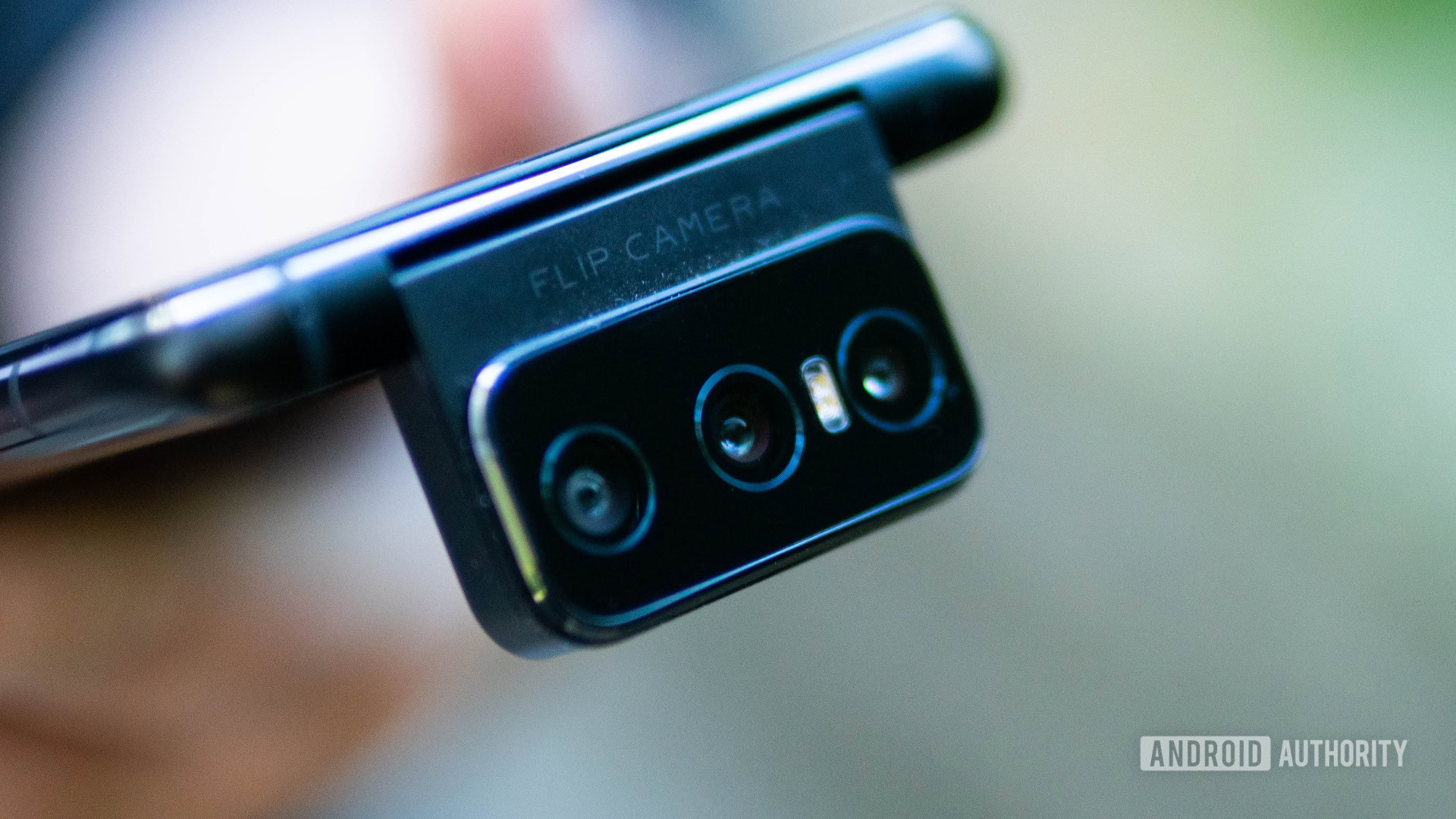
Asus Zenfone 7 Pro
What we like
What we don't like
Our scores
Asus Zenfone 7 Pro
Asus’ weird and wonderful Zenfone 6 launched last year and debuted the company’s unique flip camera system. The company is back with the Zenfone 7 and Zenfone 7 Pro — both of which see the flip camera design evolve.
Did ASUS make the flip camera valuable enough to warrant your cash? In the same vein, did ASUS do enough to distinguish itself from the stiff competition? Find out in Android Authority’s ASUS Zenfone 7 Pro review.
Design: Long in the tooth
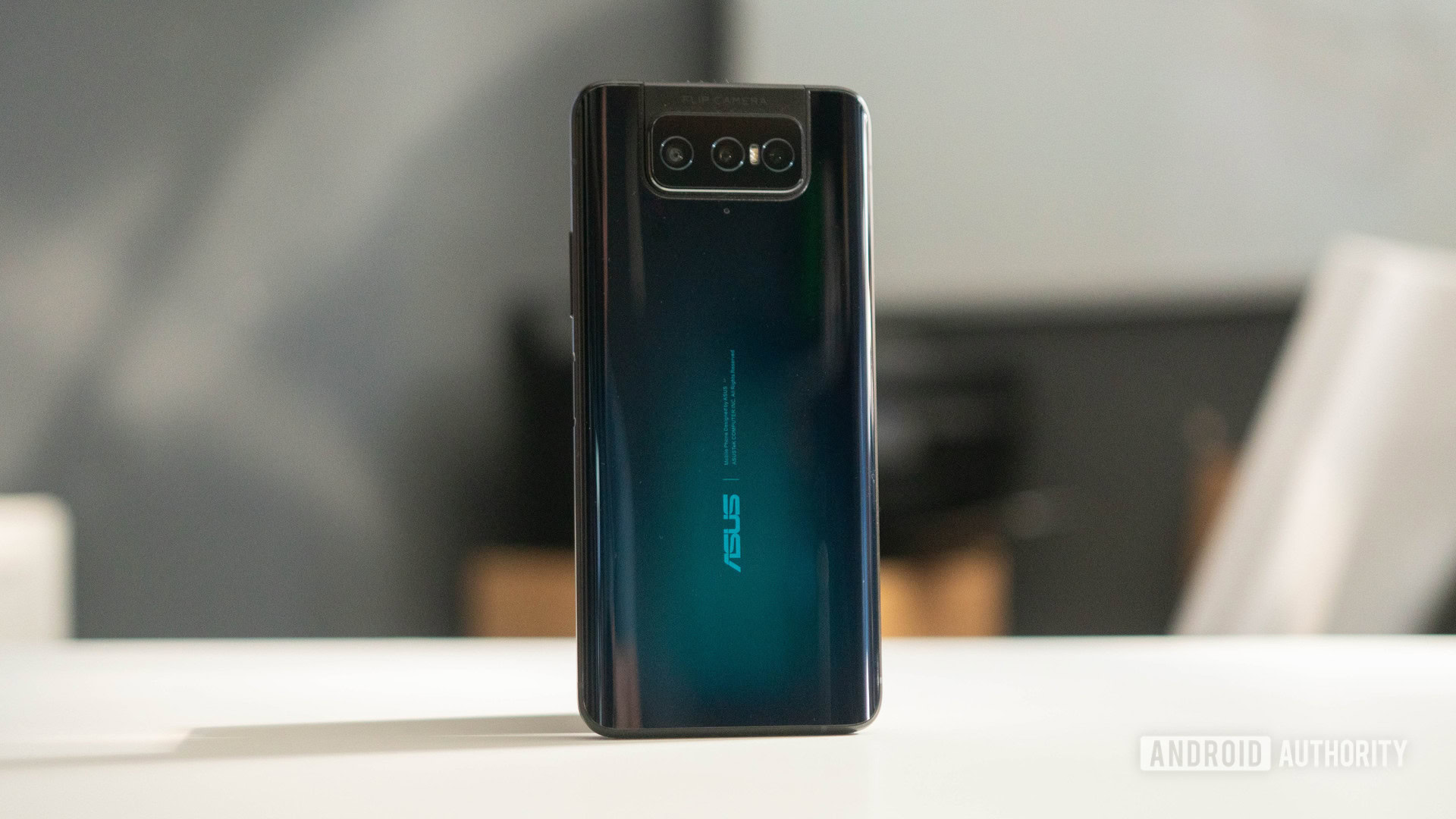
- Gorilla Glass 6 (front)
- Gorilla Glass 3 (back)
- Series-6,000 aluminum
- Flip camera system
- 165.08 x 77.28 x 9.6mm
- 230g
As soon as you pick up the Zenfone 7 Pro, you quickly realize how much of a lump this phone is. At 230g and 9.6mm in thickness, it certainly takes presence in your pocket. As such, the phone isn’t the best fit for those who prefer compact, lightweight devices.
Related: Super-sized smartphones: Looking back at some of the ‘chonkiest’ phones ever made
The Zenfone 7 Pro carries over the glass sandwich design from the previous generation. There’s a large camera module on the back, which spins around to the front thanks to ASUS’ flip camera mechanism. The company claims the motor has 2.2x the torque of last year’s model, for better longevity. It’s rated for 200,000 flips, as opposed to last year’s 100,000.
Up front is the display, which is surrounded by some sizable bezels and an earpiece speaker nestled in between the glass and the metal frame. On the left, there’s a dual-SIM tray with microSD support. The volume rocker and power button/fingerprint scanner are on the right. On the top edge is the flip camera mechanism. The USB-C port, speaker, microphone, and notification LED are on the bottom.
The phone is hefty, but the flip mechanism is a little loose.
The aluminum rails help the phone feel robust and solidly made. However, their coating is slippery and so we recommend using a case.
The flipping camera system rattles a little and isn’t as tight as I’d like it to be. Moreover, the moving parts mean ASUS couldn’t certify the Zenfone 7 Pro for water and dust resistance.
The side-mounted fingerprint scanner is very quick and accurate. It registered my thumb quickly on setup. Unfortunately, the Zenfone 7 Pro’s haptics are weak and hollow, which translates to a loose-feeling experience.
Continue reading: How fingerprint scanners work
On the whole, the Zenfone 7 Pro doesn’t feel as well-built as its weight would suggest. ASUS needs to further refine its flip camera design and to implement better haptics if it wants to sell Zenfone series phones as flagships.
Display: Fast, but not color accurate
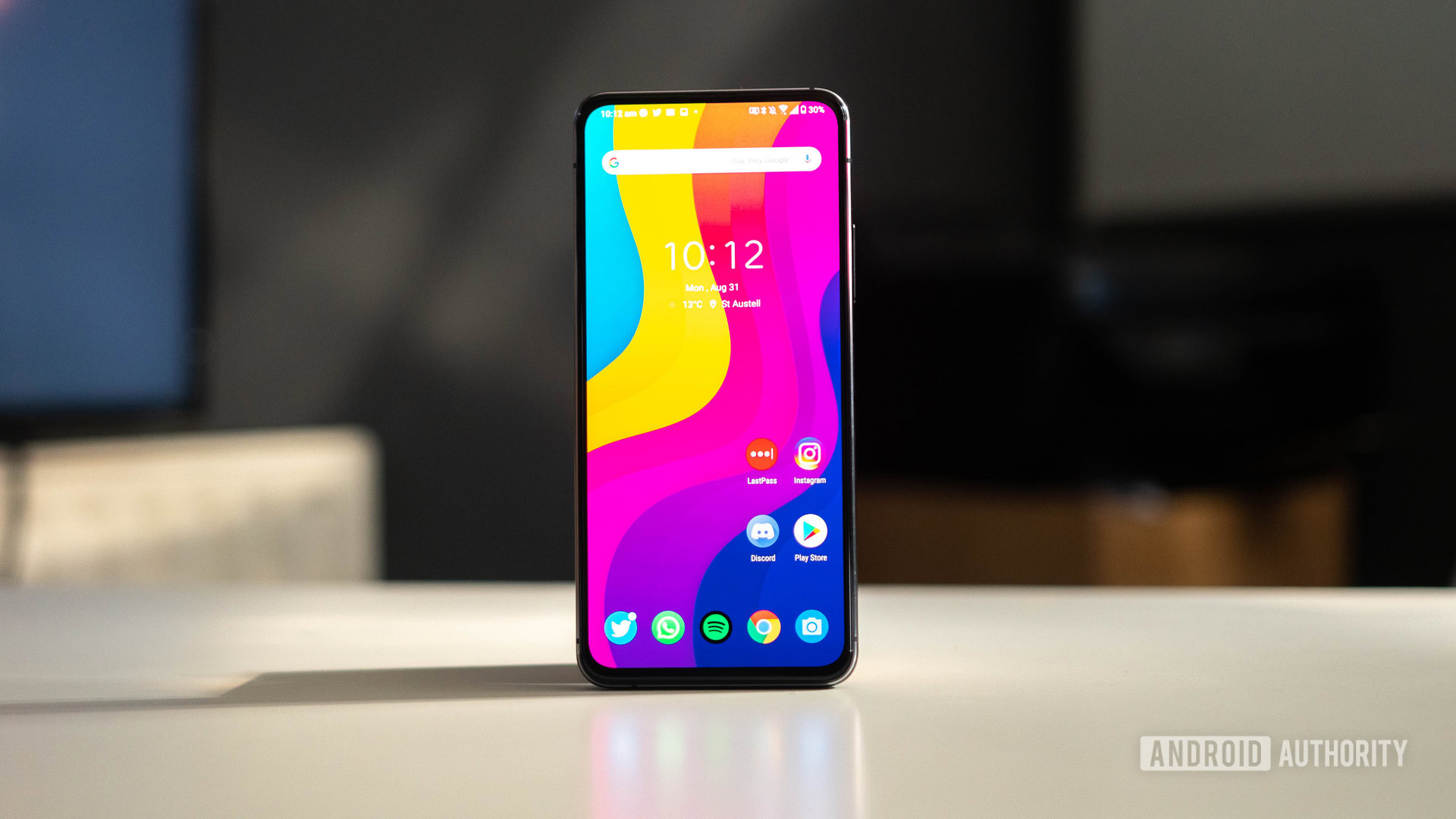
- 6.67-inch AMOLED
- 90Hz refresh rate
- 2,340 x 1,080 FHD+ resolution
- 19.5:9 aspect ratio
- HDR10+
The ASUS Zenfone 7 Pro sports a big AMOLED display. At this price point, however, we would’ve liked to see either a higher resolution or higher refresh rate screen. The Galaxy S20 Plus and OnePlus 8 Pro, for example, both sport Quad HD+ displays and both have 120Hz modes — albeit in different resolutions. On paper at least, the Zenfone 7 Pro’s panel doesn’t do enough to keep up.
While the panel gets plenty bright at over 490nits, its color accuracy is poor. The screen leans toward cool tones out of the box. This is immediately noticeable and had me diving into the display settings to change the calibration mode to a more neutral option. I settled on “Calibrated,” which gave me the most neutral-looking display. Unfortunately, none of these options will give you the color accuracy of a OnePlus 8 Pro’s display.
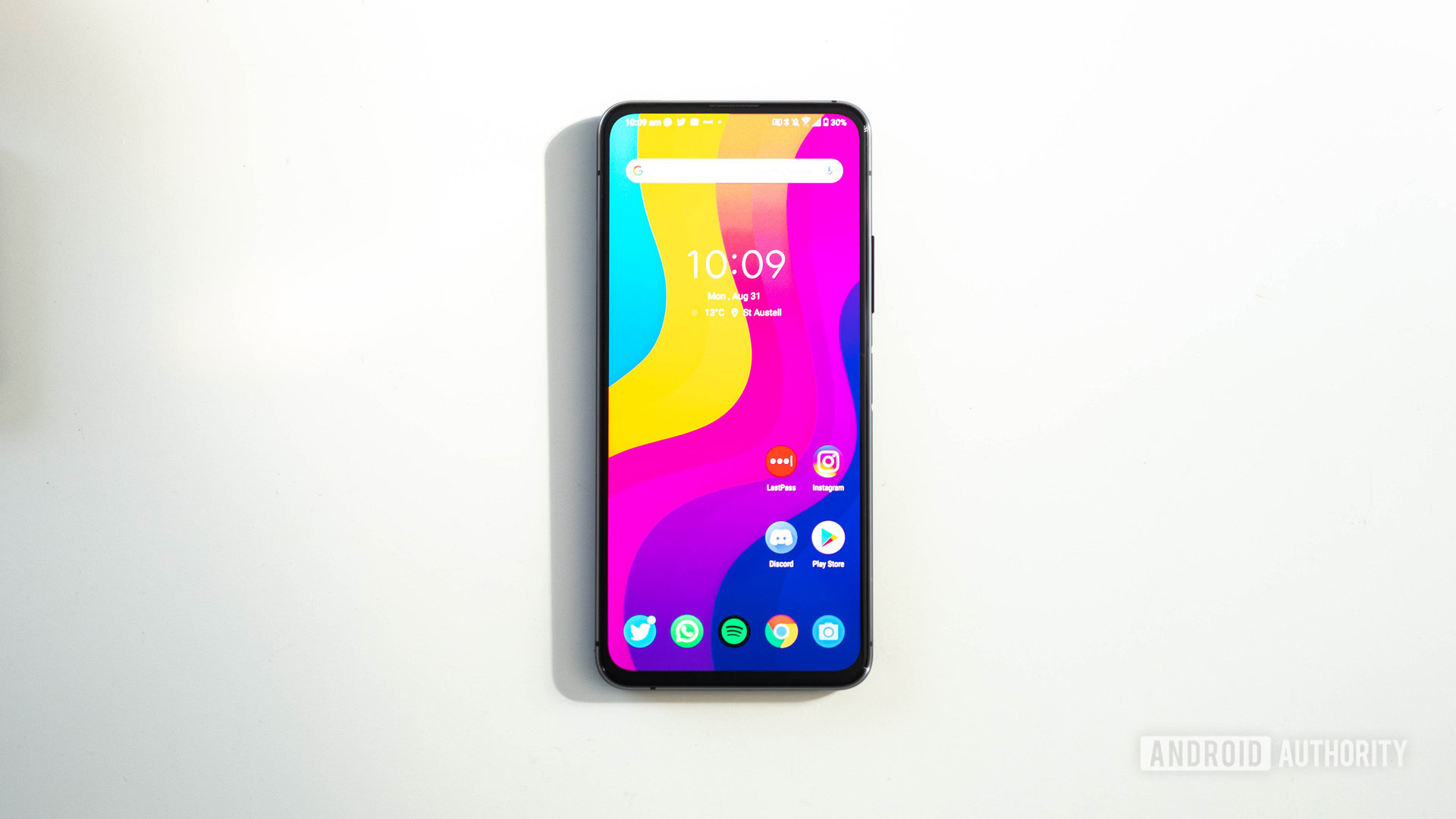
The Samsung-made screen features a 1ms response time and a 200Hz touch-sensing rate. It feels responsive and quick, both in everyday tasks and in games.
The flip camera allows the panel to be uninterrupted. This means there’s no punch-hole or notch to get in the way. I felt more immersed in the media I was consuming thanks to the lack of visual distractions.
The screen is fast and responsive, but lacks color accuracy.
As a whole, ASUS hasn’t done itself any favors by opting for a sub-optimal color setting out of the box. Changing this setting helps, but it doesn’t completely solve the calibration issue. Overall, the display needs some work to compete at this level.
Related: Understanding color accuracy
Performance: All the speed that you need
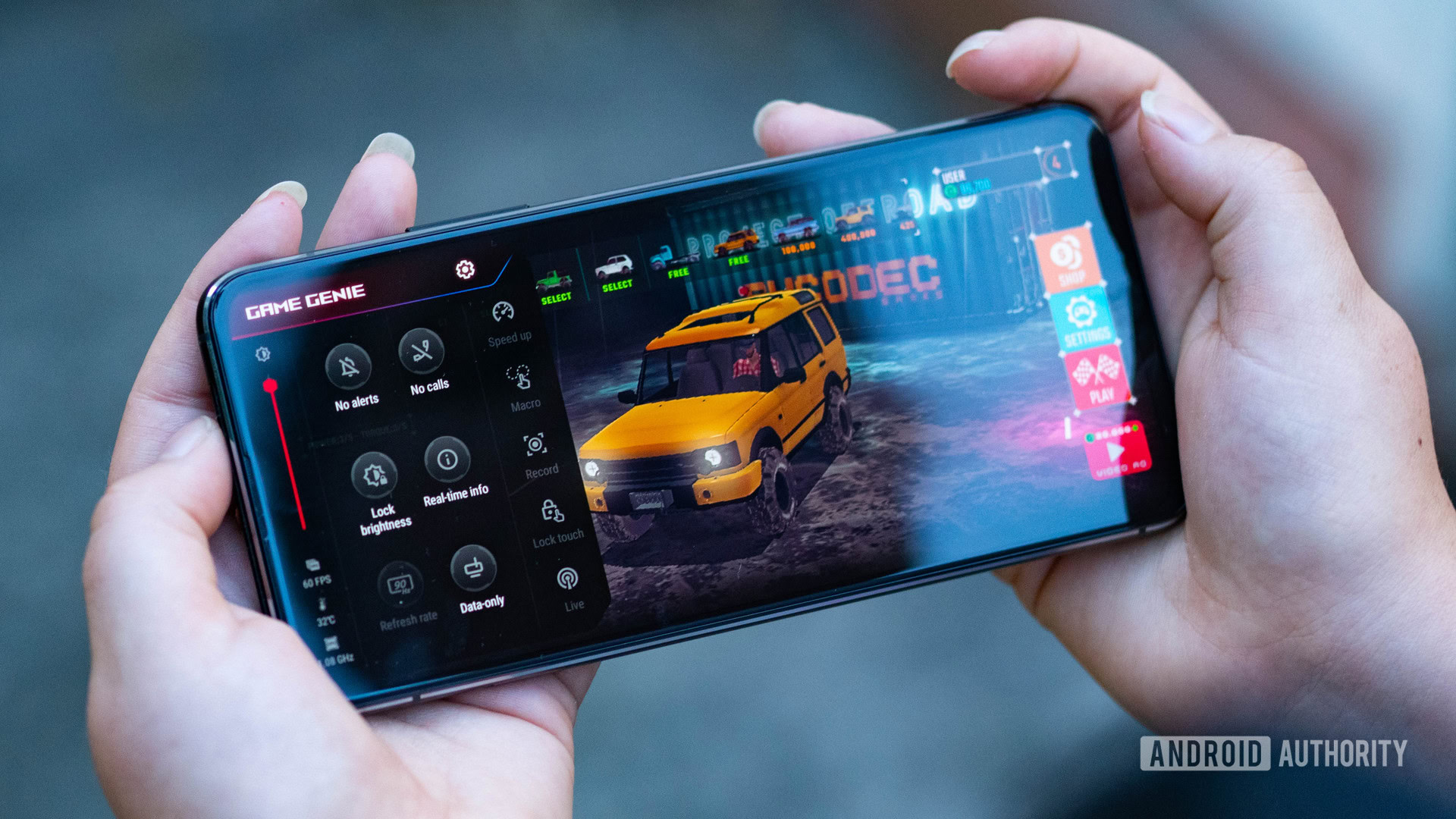
- Qualcomm Snapdragon 865 Plus
- Adreno 650 GPU
- 8GB RAM
- 256GB UFS 3.1 storage
- ZenUI 7 on Android 10
ASUS decided to pack the Snapdragon 865 Plus into its Zenfone 7 Pro. This was a good move, as it places the device above most of the competition in terms of specs.
The device comes in only one version, with 8GB RAM and 256GB storage. This translates to super snappy performance across the board. Whether you’re playing intensive games or scrolling through social media, the Zenfone 7 Pro handles it with ease.
Despite several half-hour Project Offroad 2 sessions, the device didn’t get noticeably hot. It got a tad warm just below the camera module, but by no means was it uncomfortable or worrying. That can’t be said about other Snapdragon 865 Plus phones, like the Mi 10 Ultra and the Galaxy Note 20 Ultra.
The Zenfone 7 Pro isn’t the fastest phone we’ve seen this year. It isn’t as fast as ASUS’ own ROG Phone 3, however it does come close to the Galaxy Note 20 Ultra in our purpose-built performance benchmark. It ekes out a lead over the Xiaomi Mi 10 Ultra, too.
Related: Here are some of the best Snapdragon 865 phones that you can get
Battery: Got cells?
- 5,000mAh battery
- 30W wired charging
There’s no denying the Zenfone 7 Pro is packing, with its massive 5,000mAh battery. The average battery in this class is around 4,500mAh. On most days, the Zenfone 7 Pro lasted me two days. Granted, I’m not a super-user, and your mileage may vary. On my heaviest days, the device still managed to last me a full day — even when shooting a lot of video.
The Zenfone 7 Pro has a massive battery, but lacks wireless charging.
Unfortunately, ASUS opted not to include wireless charging. The wired charging is no slouch, but it’s not game-changing, either. At 30W, the included brick managed to get our unit from 0 to 100% in 90 minutes. For a 5,000mAh battery, that’s pretty quick, but it’s not as fast as something like the Xiaomi Mi 10 Ultra for instance.
Software: Stock plus
- Android 10
- ZenUI 7
ZenUI 7’s aesthetic and user experience is almost identical to stock Android. However, ASUS has included a sprinkling of useful tools and settings to enhance the user experience.
First is ASUS’ smart key customization. This allows you to program the power button to perform a number of tasks. It can open apps, system settings, and launch Google Assistant. You can program it with a double press and a press and hold.
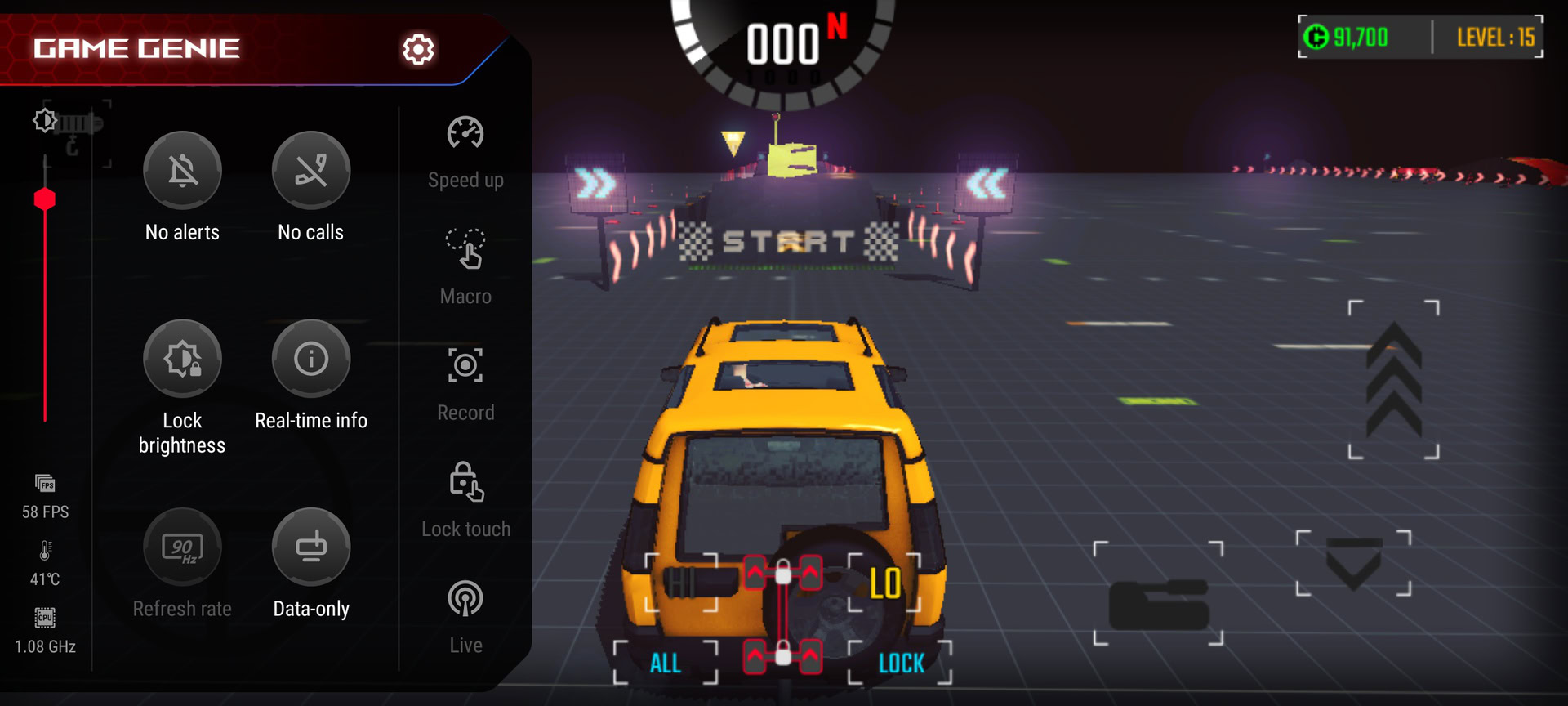
ASUS ported over Game Genie from the ROG Phone. It’s a handy, quick-access gaming toolkit. You can pause notifications, lock the screen refresh rate, adjust brightness, start a live stream, and record gameplay. It’s available with a swipe in from the left and would be handy to anyone who wants to create mobile gaming content.
ZenUI 7 is stock Android with some ASUS and ROG goodness sprinkled in.
ASUS added its own customization features as well. You can change icon shapes, the theme, and even the power menu from the custom settings page. These aren’t huge changes to the user interface, but they help you make the phone your own.
Camera: A vlogger’s dream?
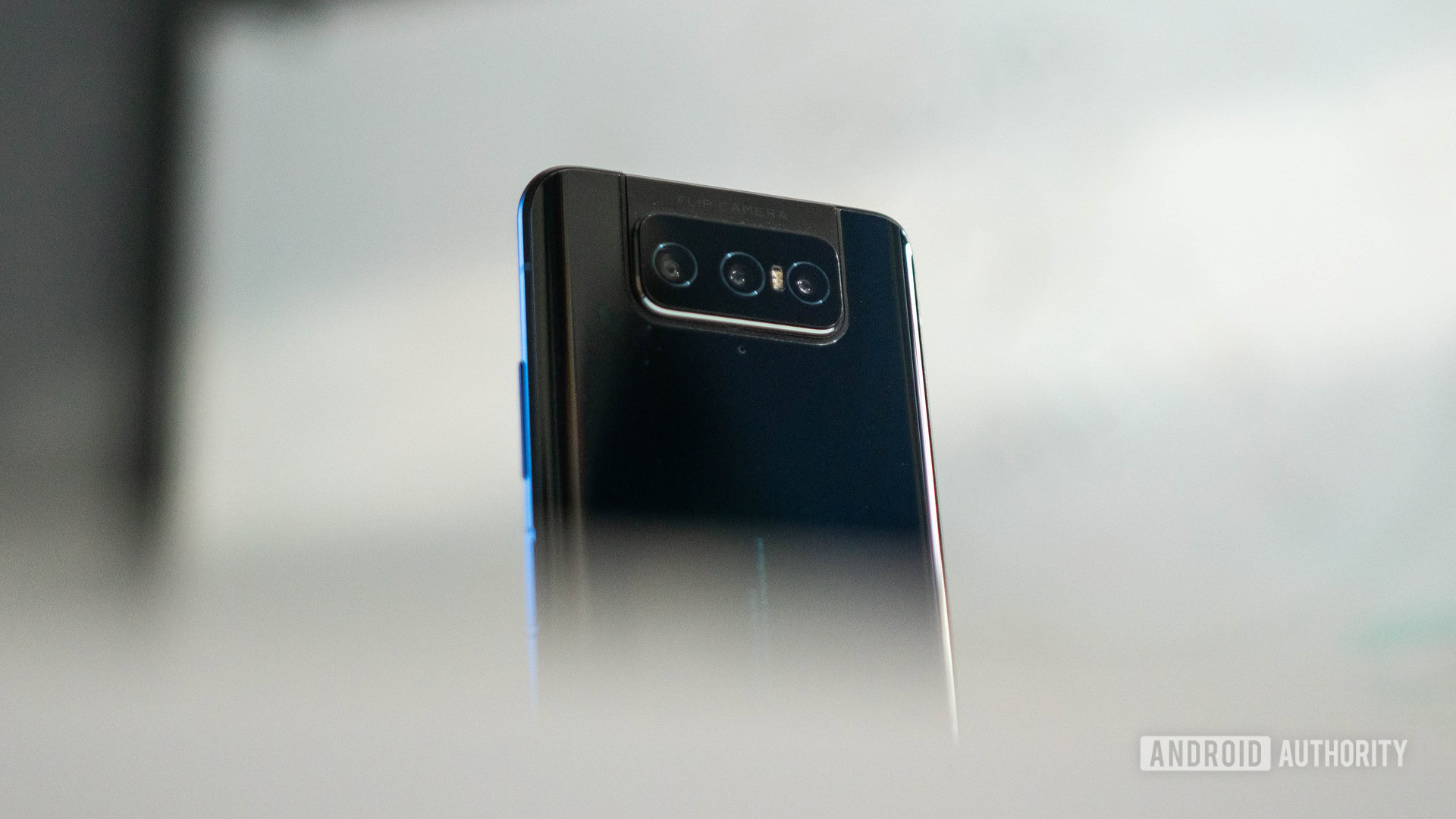
- Main: 64MP, f/1.8, 1/1.7-inch sensor, OIS
- Ultra-wide: 12MP, f/2.2, 113-degree FOV
- Telephoto: 8MP 3x optical zoom, f/2.4, OIS
- 8K @30fps
- UHD 4K @60fps
- FHD @60fps
- Slow motion: UHD 4K @120fps
Given plenty of light, the Zenfone 7 Pro takes vibrant and bright photos with lots of contrast. This varies some across all three cameras. For example, the 3x telephoto flattens the color and contrast while the ultra-wide adds to it.
The Zenfone 7 Pro captures plenty of detail on the face of it. However, when you crop in, you can see ASUS’ aggressive noise reduction. In the set of shots from a moor below, the telephoto camera flattened the moor with its noise reduction. In real life, the lighting conditions weren’t bad at all. Certainly not low enough to warrant so much noise reduction.
Noise isn’t the only issue. The telephoto camera drops exposure, color, contrast, and dynamic range. The below shots of a moor and a lake show this off well. The grass on the moor has suddenly lost most of its color and is barely visible compared to that in the main and ultra-wide images.
In the shot of the lake, the lake itself has now been turned completely smooth and the sky has been washed out. It almost looks as if these were taken on completely different smartphones. The ultra-wide camera seems to do the opposite — exaggerating colors as opposed to flattening them.
This noise-reduction phenomenon occurs when you flip the cameras around to selfie mode. Not only is my skin being smoothed (even with the beauty mode turned off), but so is my shirt, which looks strange. Sure, there’s pretty much no noise in any of the photos, but that’s not always a good thing.
The Zenfone 7 Pro does night mode well. In reasonable conditions, such as a lit street below, the phone captured detailed photos with the main camera. The ultra-wide doesn’t do as good a job, which makes sense given the smaller sensor and lack of optical stabilization.
To stretch the Zenfone 7 Pro’s legs, I went to the beach at 1:30am and shot this set of images. The moon was bright and full, which allowed me to capture some interesting shots of the sea and a nearby factory. They’re not amazing, but the phone managed to capture more than what I could see with my eyes, which is impressive. There are quite a few visual artifacts where the denoising was competing with the sharpness filter, but all in all I was very impressed.
Where the Zenfone 7 Pro shines is in its video recording, and by extension its selfie video. It can shoot in many modes, including 8K 30fps and 4K 120fps. Because the cameras flip around, you can vlog in these modes too. I shot a little intro sequence to the video version of this review using the device and the shots came out great. I encourage you to check out the test footage below to see for yourself.
The colors are a little over-saturated as they were in the stills, but that’s to be expected. The HDR performs really well, as tested in both harsh sunlight and a car’s headlights. The footage came out smooth and stable — perfect for vlogging. The microphones aren’t bad either.
The UHD 4K at 120fps footage is very crisp and smooth. I recorded continuously for almost five minutes without any signs of overheating problems. I further tested the FHD 240fps slow-motion, which came out well despite the drop in resolution.
Even after shooting 4K 120fps video for five minutes, I didn't run into any overheating issues.
Asus’ flip camera enables a couple of party tricks. First is the automatic panorama feature: Hold the phone still and its motor will spin the camera to capture a panoramic photo. Second is motion-tracking, where you tap to lock onto a subject. As you move the smartphone, the camera will adjust to keep the subject in the frame. These aren’t particularly useful features, but are cool to have if you want to try something new.


Asus’ camera app is as intuitive as ever. It’s got plenty of features and modes presented in a clean and easy-to-navigate carousel layout. It doesn’t match Xiaomi’s or HUAWEI’s sheer number of shooting modes, but it’s more intuitively laid out.
As a camera package, ASUS needs to work on its image processing if it wants to compete at this price range. However, if you’re in the market for a great vlogging smartphone, the Zenfone 7 Pro should be at the top of your list.
Please find the full resolution camera samples in this Google Drive folder.
ASUS Zenfone 7 Pro extras
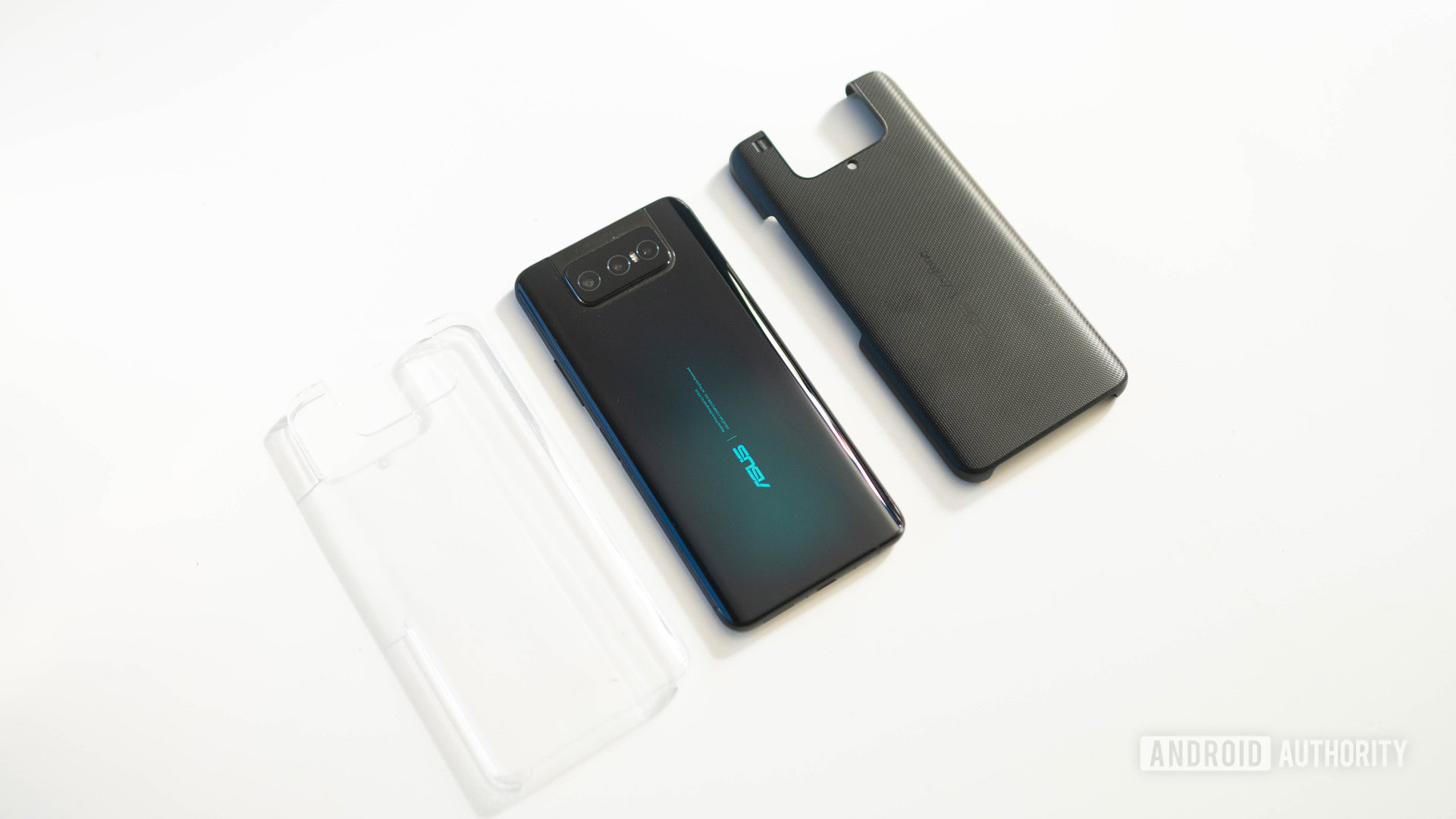
ASUS amplified the Zenfone 7 Pro’s earpiece speaker to pair with the bottom-firing speaker for a stereo effect. The sound signature is loud, though very tinny. The lack of depth means it’s hard to get immersed in any media being played through the device’s speakers. Unfortunately, ASUS removed the headphone port with this model, too. This means that you’re stuck to either using an adapter or Bluetooth audio.
The included cases are a nice touch. I opted to stick with the tough case during the majority of the review period. Also included in the box are the 30W charging brick and the USB-C to USB-C cable to go with it, both in black.
ASUS Zenfone 7 Pro specs
| ASUS Zenfone 7 | ASUS Zenfone 7 Pro | |
|---|---|---|
Display | ASUS Zenfone 7 6.67-inch AMOLED FHD+ HDR10+ 90Hz refresh rate Corning Gorilla Glass 6 | ASUS Zenfone 7 Pro 6.67-inch AMOLED FHD+ HDR10+ 90Hz refresh rate Corning Gorilla Glass 6 |
Processor | ASUS Zenfone 7 Qualcomm Snapdragon 865 | ASUS Zenfone 7 Pro Qualcomm Snapdragon 865 Plus |
GPU | ASUS Zenfone 7 Qualcomm Adreno 650 | ASUS Zenfone 7 Pro Qualcomm Adreno 650 |
RAM | ASUS Zenfone 7 6GB / 8GB LPDDR5 | ASUS Zenfone 7 Pro 8GB LPDDR5 |
Storage | ASUS Zenfone 7 128GB UFS 3.1 Expandable with microSD card (up to 2TB) | ASUS Zenfone 7 Pro 256GB UFS 3.1 Expandable with microSD card (up to 2TB) |
Battery | ASUS Zenfone 7 5,000mAh battery 30W wired charging | ASUS Zenfone 7 Pro 5,000mAh battery 30W wired charging |
Cameras | ASUS Zenfone 7 Primary: 64MP Sony IMX686 sensor with EIS f/1.8 aperture 0.8μm pixels Dual LED flash 8K/30fps video Secondary: 12MP ultra-wide sensor (IMX363) Tertiary: 8MP 3x telephoto with EIS | ASUS Zenfone 7 Pro Primary: 64MP Sony IMX686 sensor with OIS f/1.8 aperture 0.8μm pixels Dual LED flash 8K/30fps video Secondary: 12MP ultra-wide sensor (IMX363) Tertiary: 8MP 3x telephoto with OIS |
Connectivity | ASUS Zenfone 7 Wi-Fi 6 Bluetooth 5.1 NFC | ASUS Zenfone 7 Pro Wi-Fi 6 Bluetooth 5.1 NFC |
SIM | ASUS Zenfone 7 Dual nano-SIM MicroSD card (up to 2TB) | ASUS Zenfone 7 Pro Dual nano-SIM MicroSD card (up to 2TB) |
Operating System | ASUS Zenfone 7 Android 10 | ASUS Zenfone 7 Pro Android 10 |
Audio | ASUS Zenfone 7 Stereo speakers No 3.5mm port | ASUS Zenfone 7 Pro Stereo speakers No 3.5mm port |
Dimensions | ASUS Zenfone 7 165.08 x 77.28 x 9.6mm 230g | ASUS Zenfone 7 Pro 165.08 x 77.28 x 9.6mm 230g |
Colors | ASUS Zenfone 7 Aurora Black Pastel White | ASUS Zenfone 7 Pro Aurora Black Pastel White |
Value for money
- ASUS Zenfone 7: 6GB/128GB — €699 (~$830)
- ASUS Zenfone 7 Pro: 8GB/256GB — €799 (~$950)
ASUS is launching the Zenfone 7 Pro in Europe for €799, which puts it right in between the OnePlus 8 and OnePlus 8 Pro. It’s also competing with the Samsung Galaxy S20 Plus and the iPhone 11 at this price point. Those are some very good phones from renowned brands.
The Zenfone 7 Pro has some serious company in the flagship smartphone space.
The Zenfone has the newest flagship SoC, the biggest battery, and the most unique design. However, the competition has proven to have either better displays or better cameras — and sometimes both.
The Zenfone 7 Pro doesn’t have the most compelling feature set at this price. ASUS is betting on its novel flip camera system as opposed to typical high-end flagship design. It’s up to you as a buyer to ask yourself if the flip camera is worth giving up other features for.
ASUS Zenfone 7 Pro: The verdict
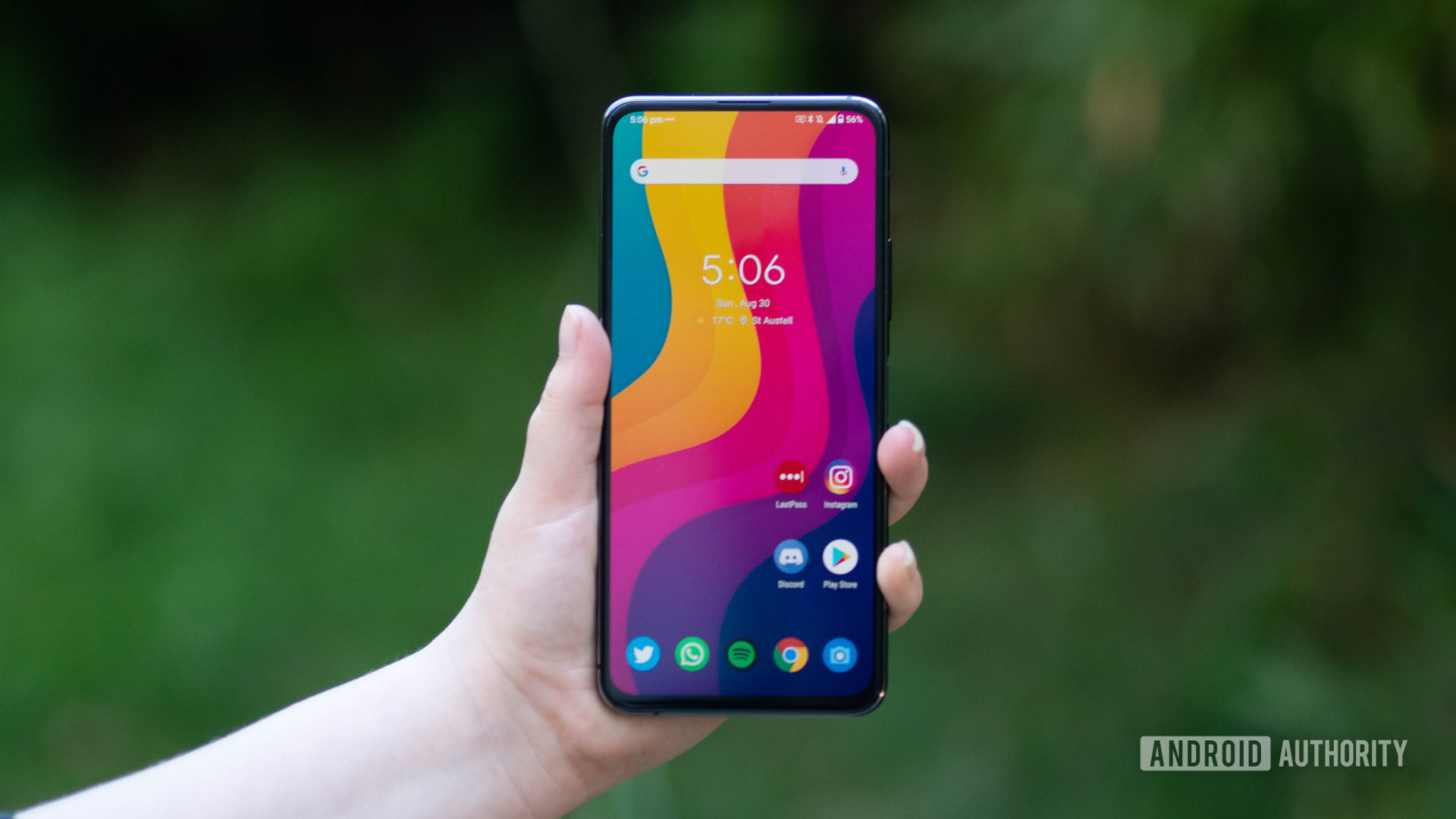
On the whole, the Zenfone 7 Pro is for a very niche set of users. It’s hard to recommend to everyday users when the competition is so good. The inconsistent camera processing and the lack of wireless charging and waterproofing put the Zenfone 7 in a tough place.
That said, the battery life, video recording, and performance are all great. It’s a solid smartphone for those who want exactly what the Zenfone 7 Pro is — a vlogging smartphone. With 256GB of base storage and microSD expansion, there’s plenty of room for your footage. Having all three cameras face you means you’ve got three different perspectives to choose from. Finally, the 5,000mAh battery will help you film your day without needing to top up.
Very few people actually buy phones for vlogging though. So, unless you are desperate for the flip camera and the huge battery, you might be better served by a competing device.